
Queen of flowers, thorned protectress, balm of my heart.
Rose has a mythic presence. She is associated with gods and saints – a symbol of beauty, love, protection, and grace. Wherever she grows – from China, to the Middle East to Europe to the Americas – stories are intimately entwined in human history. She is an old soul after all – she has been here for 35-million years and has seen us through the rise and fall of many civilizations. Her influence has reigned in art, in poetry, in song, in religious ceremony since ancient times, and her powerful presence continues to reign today. In this season of blooming wild roses, I bask in the sweet scent and beauty. I gather the soft petals and fill my house with fragrance – restock my medicine chest with rose honey, teas, oils, and elixirs. They ensure that in my darkest hours I will be able turn to rose to heal my body, open my heart and refresh my soul.
Identifying Wild Rose: All wild roses have beautiful pink flowers with 5 petals and many stamens. Baldhip or dwarf rose (Rosa gymnocarpa) has pale pink to pink flowers, alternate leaves with 5-9 toothed leaflets and orange to red pear shaped fruits without attached sepal lobes. The crown of sepals falls from the fruit (also called the hip) and leaves it “bald.” It has numerous small spines crowded along the stem and smaller flowers than other species.
Nootka Rose (Rosa nutkana) is generally taller with a pair of large prickles at the base of each leaf (each leaf contains many leaflets). Leaves are alternate with 5-7 toothed leaflets with rounded tips. Flowers are deep pink and large. There is usually one per branch tip.
Clustered Wild Rose or Swamp Rose, (Rose pisocarpa) is found in wet places and has clustered flowers with sharp-pointed leaflets. There are many other varieties of rose that look similar to our wild rose. If they are fragrant they can be used for food and medicine. Rosa rugosa is commonly planted along roads by the Department of Transportation and in public spaces. Its deep pink flowers are very fragrant and are slightly larger that wild rose.
Where it grows: Wild rose grows in variety of habitats including wooded, open, dry and moist locations from low to middle elevations. Nootka Rose generally likes sunnier spots while dwarf Wild Rose is usually found in shaded areas. Many roses form dense thickets. Birds love to eat rose hips and help distribute the seeds.
When and How to Harvest: Wild rose flowers are prized for their beauty, their scent and their medicine. The best time to harvest is when they are most eye catching – in spring to early summer when they have just opened and are very fragrant. You will see bees and other winged creatures lapping up their nectar and pollen. Whole flowers can be pinched off but I harvest mostly the petals so that the inner part can turn into fruit, which is also called rose hips. Rose hips turn from green to orange or blood red depending on the species. Watch for a post on rose hips in the fall when they are ripe. Rose leaves and stems are also harvested for medicine and can be gathered in spring through early fall.
Rose Medicine
Ahhhh, rose, how do I even begin naming the ways I adore you? Your smell is heavenly and transports me to a refuge of grace and beauty. Many say you open the heart and offer protection. I know a woman who worked for the State of Washington and dealt with legislators every day. She slathered wild rose cream on her as a buffer and believed that it helped to soften the hardness that prevailed there. Many Northwest Coastal Indian People use wild rose for spiritual cleansing and protection. The stem is traditionally placed over babies’ cradleboards. Some stories talk about how rose thorns catch or remove unwanted energy from people. Rose is also used to bring grace and healing to those who have died or those who have been left by a loved one. This practice is echoed all over the world throughout history.
I love how the spiritual uses of rose mirror the physical uses. Where rose removes unwanted energy and helps to bring strength and protection to the spiritual body, it also does this physically. Rose is an excellent simple astringent along with most members of the rose family. What this means is that it tightens and tonifies inflamed tissue, both topically and internally where the medicine makes contact. While this sounds simple – it is really quite profound. Say you get burned. Your skin becomes red and inflamed. Even if you cool the burn off, the puffiness persists and can become painful. Nutrients have a tough time getting into the area and waste products are not carried away easily because there is so much fluid. An astringent will tighten the puffiness and help remove excess fluid – allowing for better nutrient and waste transport. Everything works better and heals more quickly. Much of disease is caused by inflammation and lack of resistance to disease because of poor tissue tone. Rose is especially indicated for diarrhea, mouth sores and sore throats, sore eyes, irritated skin, burns, bleeding, and other conditions where the tissue is boggy, disorganized and puffy.
Rose buds and blossoms are one of the most revered cosmetic ingredients. They are balancing and moisturizing, specific for irritated and delicate skin. I have seen rose oil and rose toner ease acnea rosacea – maybe because they help to tighten those tiny inflamed blood vessels. Rose is also a mild diuretic and the tea is drunk in large amounts to flush the urinary tract. The flowers are considered an aphrodisiac that wakens feelings of warmth and love. Definitely worth a try…
You make many forms of rose medicine – tea, infused petals in honey, brandy, infused oil, etc. Herbalist Janice Schofield makes rose petal vinegar that she uses for sore throats, as a douche, an after-bath splash, a facial rinse and for salad dressing. Start hanging out with wild rose and you will be experimenting with your own creations in no time – she inspires creativity.
Rose Recipes
Rose Infused Honey
- Gather aromatic petals and let wilt until they are half dry – usually about a day.
- Place petals in a glass jar with a tight fitting lid.
- Warm honey gently on the stove top so that it is very fluid but well below boiling.
- Pour enough honey into the jar so that it completely covers the flowers. Cap tightly and place in a warm spot in the garden or on a vent.
- Stir and wipe moisture off the underside of the lid every few days. This will help remove excess water from your honey.
- Strain with muslin cloth after 2-3 weeks. The pressed petals can be made into tea and drank or place in a bath for a luxurious “rose honey bath.” Store honey in a glass jar in a cool dark place. Some people like to keep it in the refrigerator but this is not necessary as long as your honey does not have too much water in it.
Add to tea, cooking recipes, cough syrup and other creations. Rose honey makes a great balancing face wash. To use it, wet your face wet with warm water. Place about a quarter’s worth of honey in your palm. Massage into your face until it begins to get tacky. Rinse with warm water. Don’t forget to lick your lips first.
Tea: Flower petals and leaves can be used for tea. Use 1 tablespoon per cup and steep for 5-10 min. I often mix rose petals with other herbs, black tea and green tea.
Persian Rose Tea
This delicious blend was inspired by my friend and gifted tea brewer Gwynne Warner.
- 1 cup good quality loose leaf black tea like Darjeeling or Aasam
- ¼ cup wild rose petals or other fragrant small petaled rose
- 2 teaspoons green cardamom seeds, chopped fine or powdered
Cut rose petals into small pieces with scissors. If you can get whole green cardamom pods for this recipe it is worth it. They are much more fragrant and flavorful that powdered cardamom. Open the green pods up with your fingernail and remove the dark seeds. They do not look like much beside mouse droppings but if you taste one you will see why they have inspired cooks for thousands of years. Finely chop the seeds. Mix all ingredients together and store. Brew 1 teaspoon tea per cup of boiled water. Steep about 5 minutes and serve with milk and honey.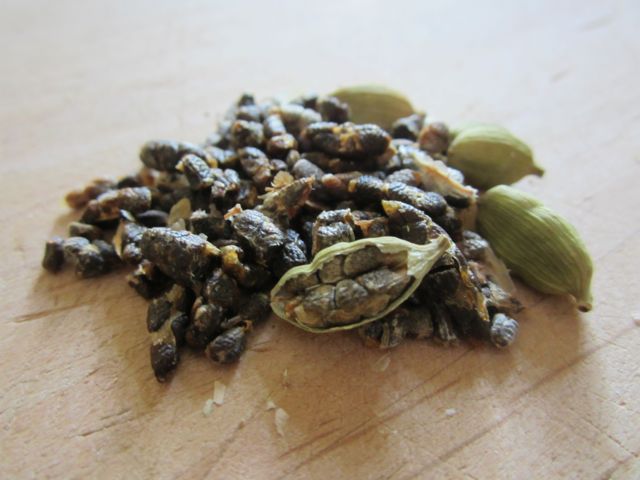
Wild Rose Toner
Rose is considered the most balancing of all plants for the skin. This old fashioned recipe stands up to modern expensive facial care products. Witch hazel is a tree with bark that is very astringent and healing. It is extracted in water, usually with about 15% alcohol as a preservative. You can find it at many natural food stores, herb shops and pharmacies.
- Fill a glass jar with wilted or dried wild rose petals.
- Cover completely with witch hazel extract.
- Cap the rose and witch hazel jar with a lid and let sit for at least 2 weeks. Shake every couple days to distribute medicine throughout the fluid.
- Strain with muslin cloth then store in a glass jar or spray bottle. Label.
Spray or pat this liquid on your face as a refreshing astringent to tighten pores and balance skin. You can add 25% rose water to this extract for additional rose fragrance and medicine.
Rose Oil – Solar Infusion
Wild rose infused oil has a sweet delicate scent and is great for skin care products. Jojoba oil is definitely my first choice as a base for making this but it has become prohibitively expensive in the last year. Olive oil works. It is inexpensive, accessible and has a long shelf life but it does have its own fragrance. Grapeseed, almond or sunflower oils are also good choices for making rose oil but be extra careful to remove moisture so that they do not go rancid or form a gel at the bottom of the bottle. You may want to add a preservative like Vitamin E (1 teaspoon per cup of rose oil) to help prevent this.
- Gather rose petals on a dry day and set them in a basket. Let them wilt for about 1 day until they are half dry.
- Place the petals in a wide mouth jar and completely cover with oil. Make sure no petals are above the oil – this increases the likelihood of mold forming. Cover with a lid and place in a sunny spot or a warm place in your house.
- Stir the oil every few days and wipe condensation away from the underside of the lid.
- After at least 2 weeks strain out petals with muslin cloth. Let the oil sit for several hours so that any water falls to the bottom.
- Pour the oil into a glass jar – leaving any water behind. Label and store in a cool dark place. Rose oil should last about a year.
Rose oil is a favorite base ingredient in making lotion, lip balm and salve. It is also nice as a body oil or massage oil.
Eating Rose Petals
Rose petals are edible and can add beauty and flavor to salads. They are used in flavoring deserts, sauces and jellies. My husband sealed me to his heart when he made “Yogurt Honey Jelly with Strawberries and Roses.” It takes some time but it is worth it. Check it out at myrecipes.com
Strawberry Rose Ice Cream
How could you go wrong? Strawberries are one of the first berries of the season and they often ripen at the same time wild rose is blooming. You will need dried rose petals to make tea for this recipe.
- 2 cups water for making tea
- ¼ cup rose petals, dried
- 1/3 cup honey
- 2 cups (1 pint) heavy cream
- 16 ounces ripe strawberries, cleaned
Boil 2 cups of water in a small saucepan. Remove from heat, add rose petals and cover with a lid. Let steep about 15 minutes. Strain tea into a blender. Add honey, stir and let cool to room temperature. Add cream and strawberries. Blend until smooth. Place in an ice cream maker and follow instructions. Serves 6.
14 Comments
Trackbacks/Pingbacks
- 12 Plants Native Americans Used to Cure EVERYTHING (From joint pain to cancer) - Healthy Holistic Living - […] https://wildfoodsandmedicines.com/wild-rose-flower/ […]
- 12 Plants Native Americans Used to Cure Everything (From joint pain to cancer) - World Healthy News - […] https://wildfoodsandmedicines.com/wild-rose-flower/ […]
- 12 Plants Native Americans Used to Cure EVERYTHING (from joint pain to cancer) : The Hearty Soul - […] https://wildfoodsandmedicines.com/wild-rose-flower/ […]
- Honey Rose Old Pictures | Tolly Up 2 Date Trade - […] Wild Rose Flower — Wildfoodsandmedicines – Queen of flowers, thorned protectress, balm of my heart. Rose has a mythic…



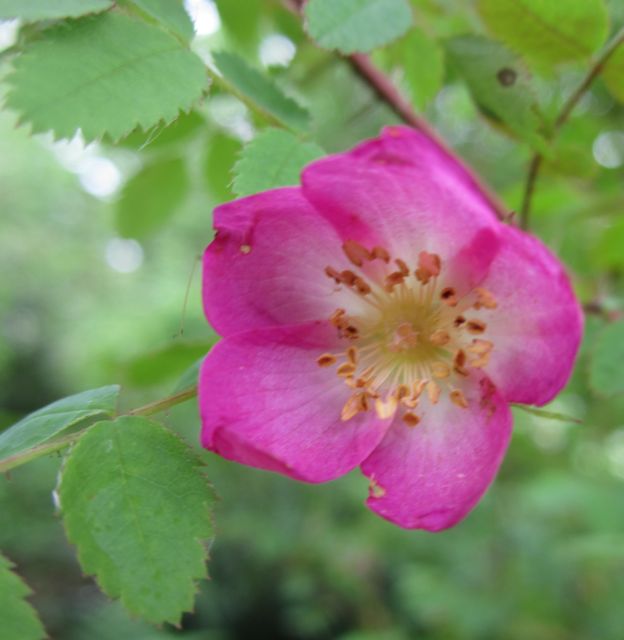
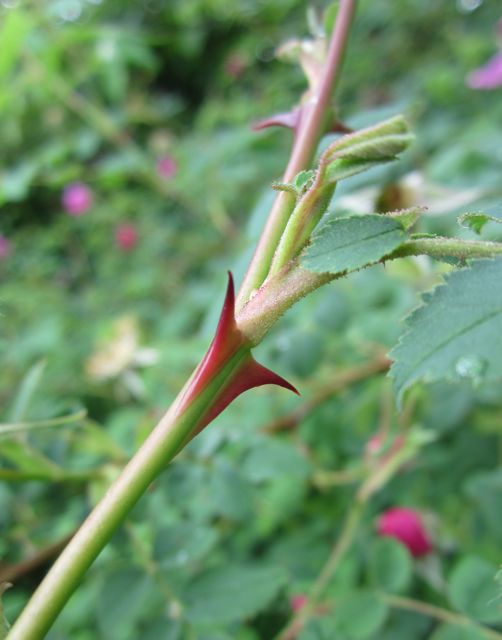
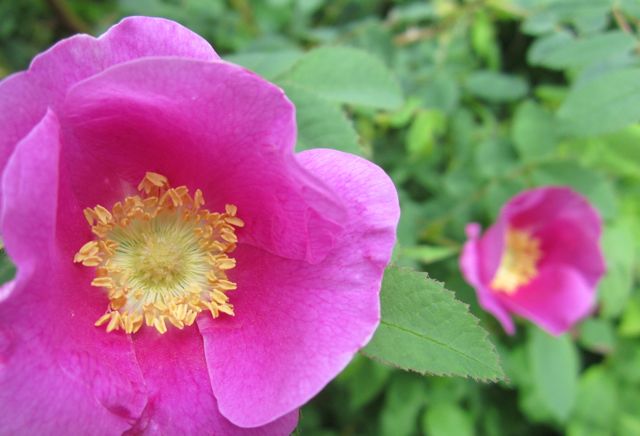


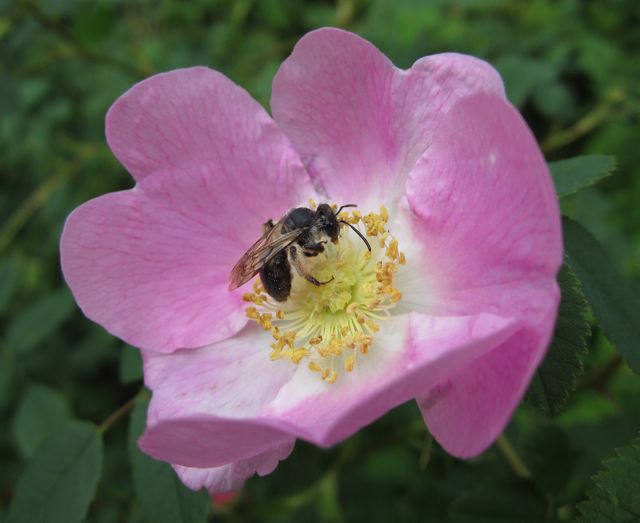


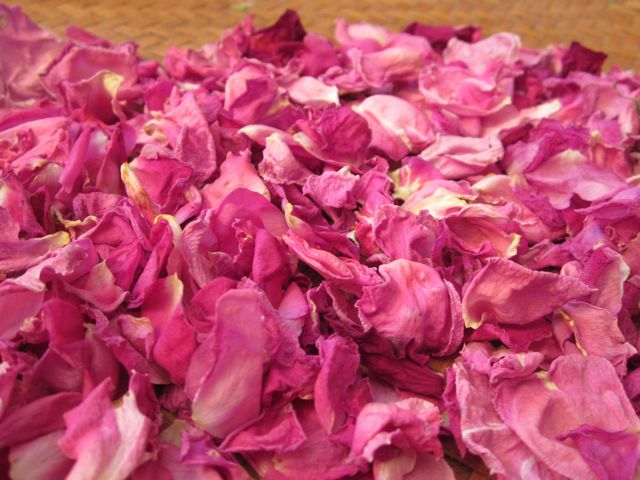
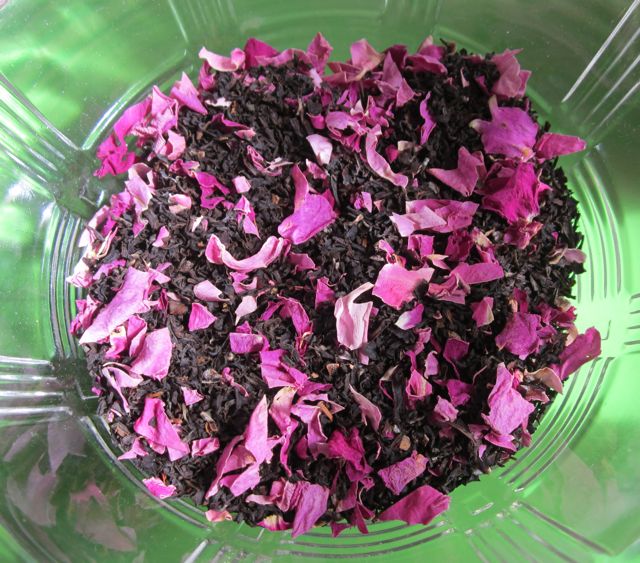
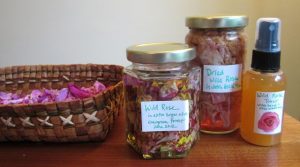
Thank you for this very informative and wonderful article. I grow all types of roses in my garden and have recently taken an interest in learning more about rose hips, their benefits and how to use rose petals. I normally use them only in sachets—but it is amazing to learn that they can be used for so many other purposes —lotions, astringents etc. I really enjopy your blog.
I want to grow wild roses. Can you tell me where to get seeds or plants?
You can get wild rose at most plant nurseries that carry native plants. Nootka rose is a great variety with large fragrant flowers.
Thank you for sharing your vital information with everyone I am an 60 year woman who still does and uses herbs oils plants etc etc for my person well being
Your article was timely for me. Going through difficult relationships and was going to tear down my garden today but have changed my mind because I read this. I have always loved doses and would love a rose garden.
I am so glad it was helpful!
How do you use the rose stems?
You can cut them up and either boil them fresh or dried for an astringent tea. Use about 1 teaspoon to 1 tablespoon per cup of water.
Just discovered your site. How do I get the info from your blogs of the past and print them for myself. I will never remember all the data and I have most of these plants on my property………
Hi Liz,
You can probably print them off the blog, but if you can’t figure it out, you can email me at [email protected] and I may be able to send you just the text without the pictures.
Thank you for sharing.
I would like to buy fresh wild rose petals to be used as tea for my cancer
Hi Mely. I wish I had enough wild rose petals to sell. I do not know of any commercial sellers, but Pacific Botanicals and Mountain Rose Herbs have high quality organic rose petals for sale.
I read in Beverly Gray’s book The Boreal Herbal that it’s a very good idea to leave at least one rose petal per flower harvested … the insects are then still attracted to the colour of the petal … and be careful to not over-harvest